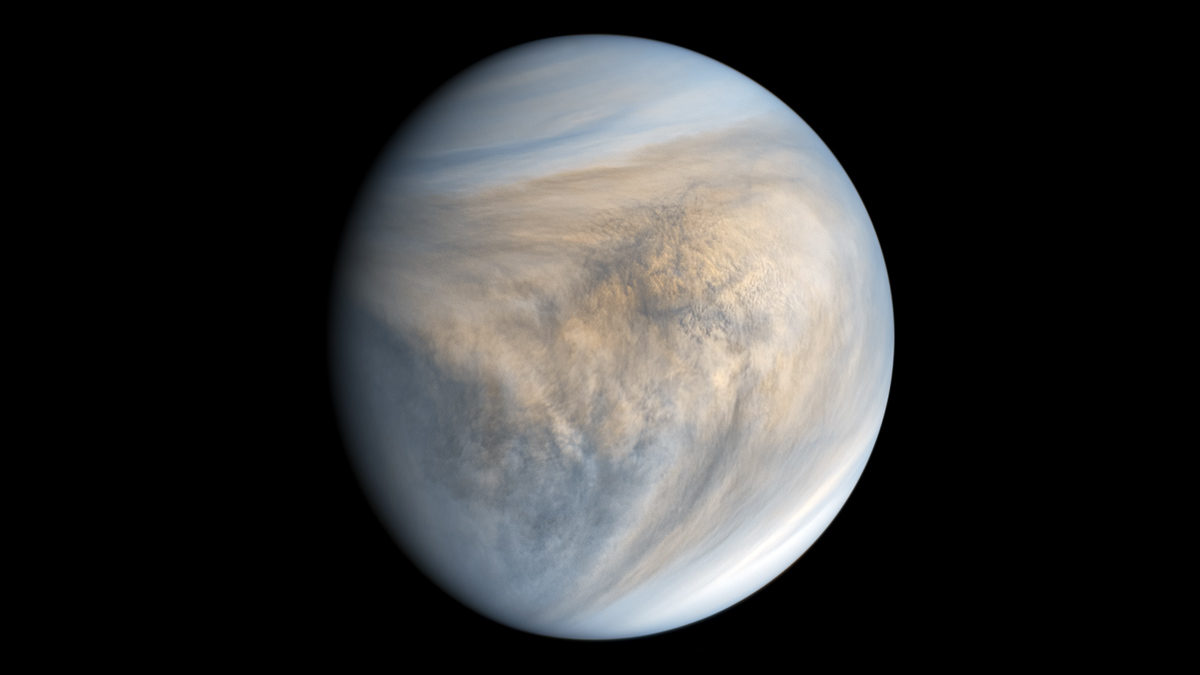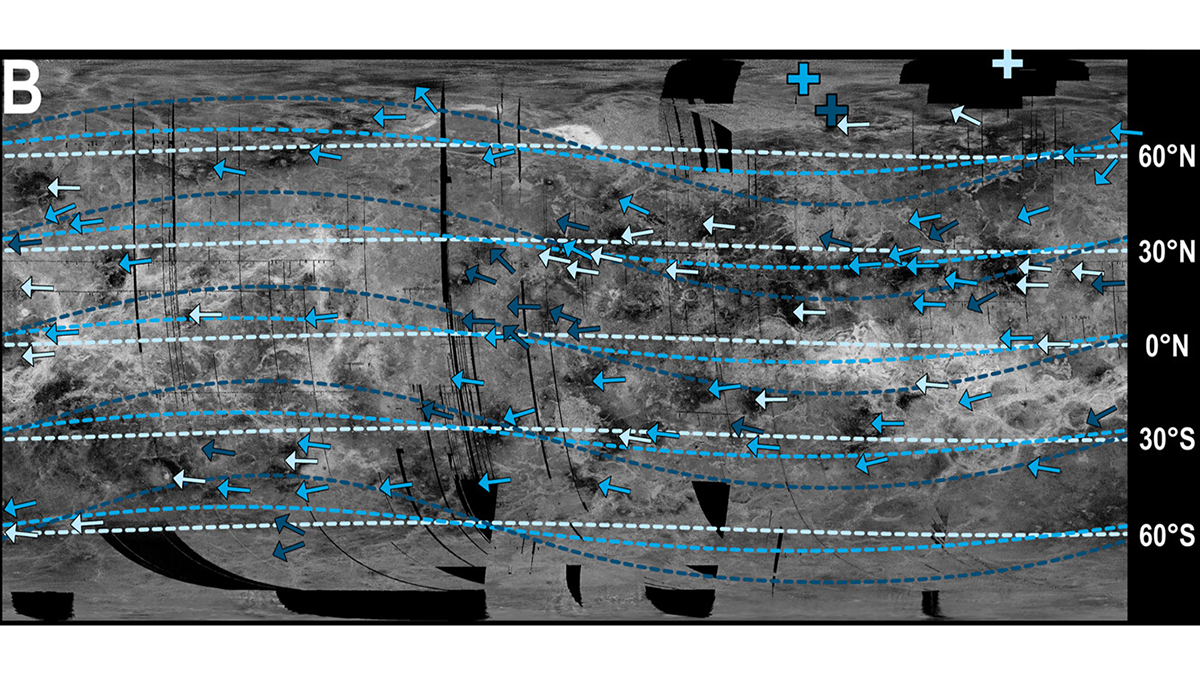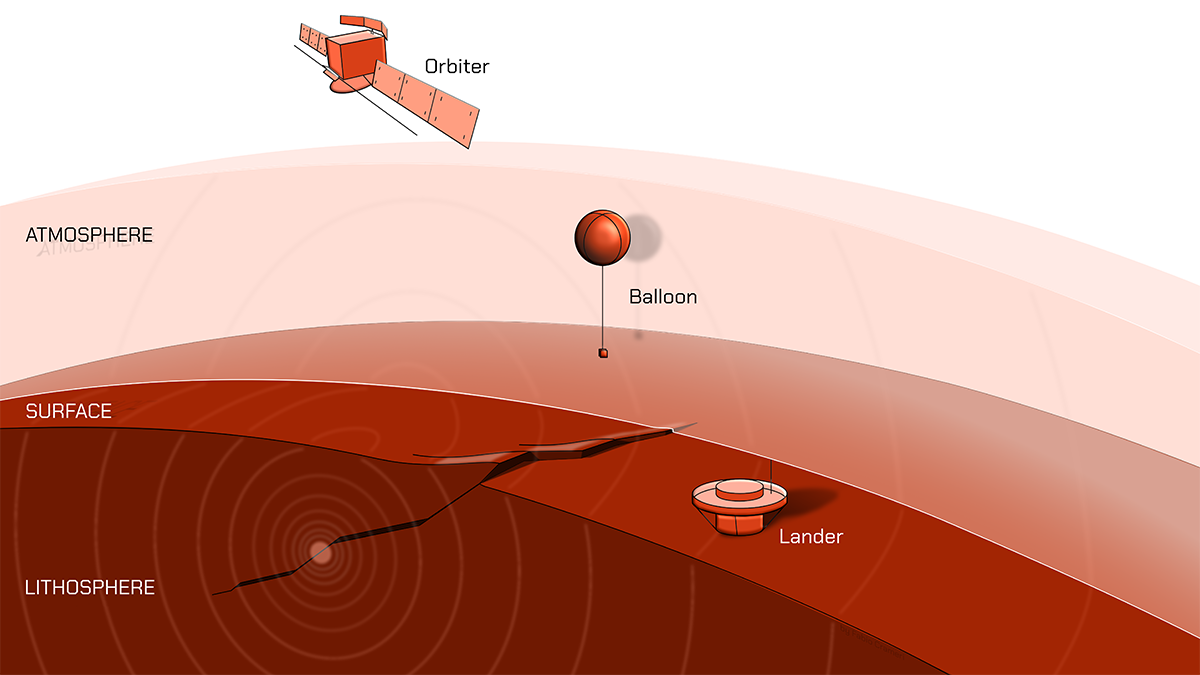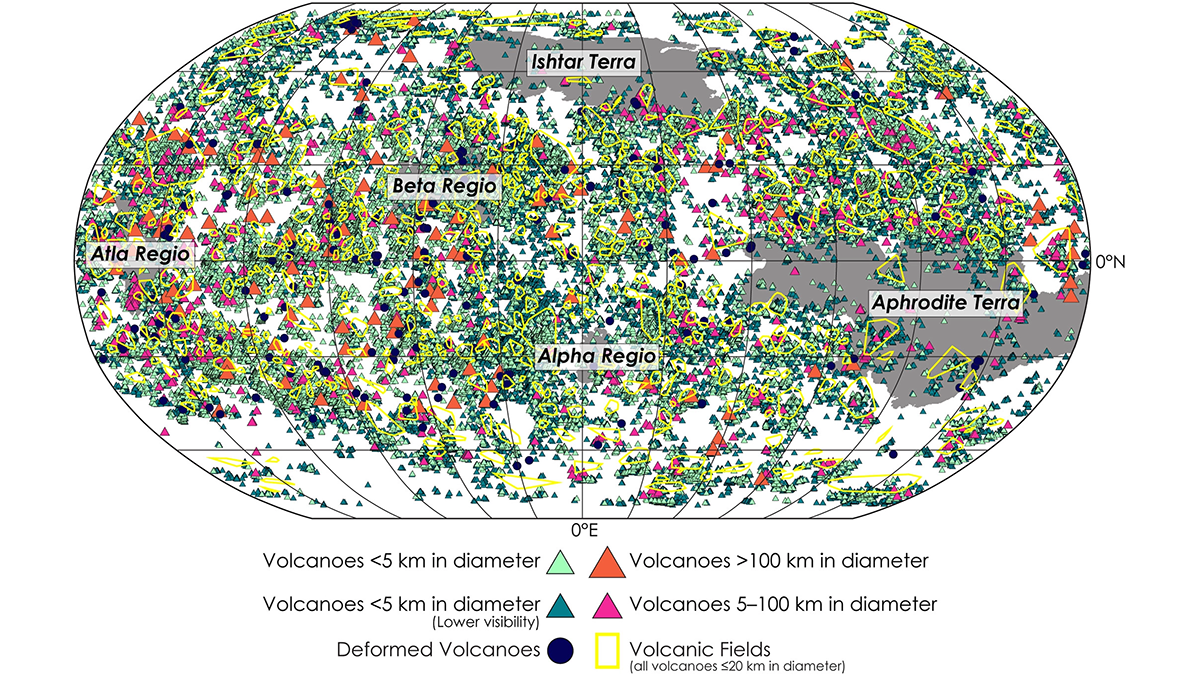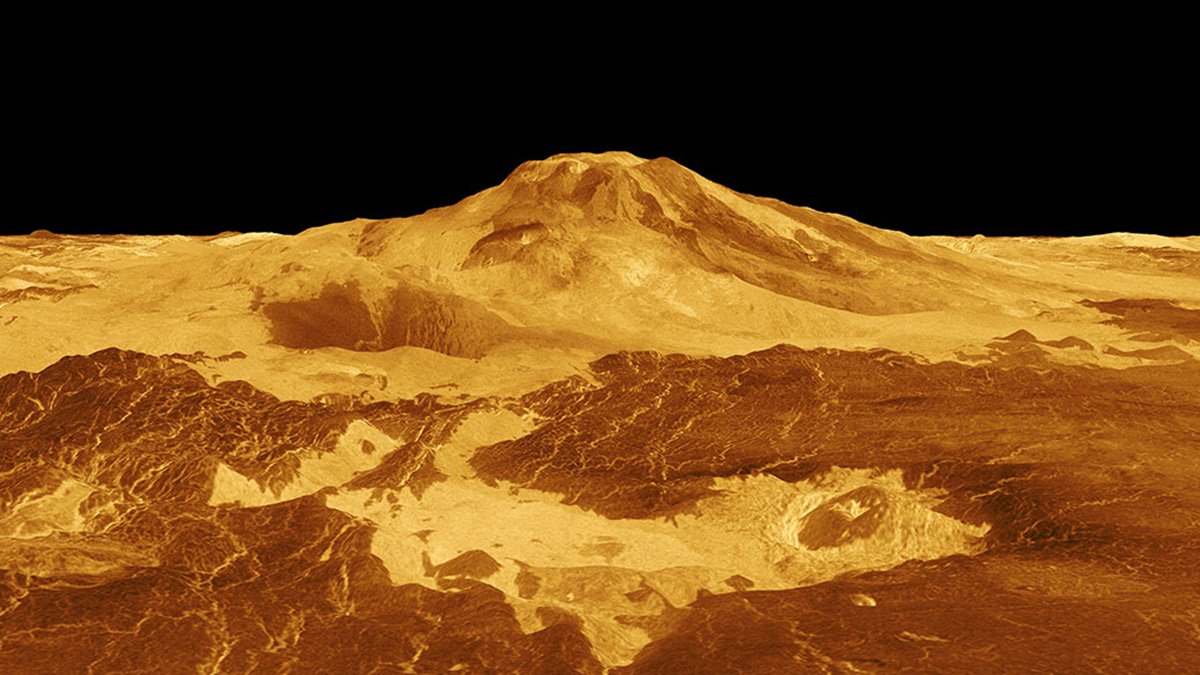A new study suggests that a once-daily atmospheric tidal cycle may be a bigger driver of rapid Venusian winds than previously thought.
Venus
New Evidence for a Wobbly Venus?
The orientation of wind-blown impact deposits on Venus is not consistent with modeled wind directions, suggesting Venus’s rotation axis may have changed.
Three Ways to Track Venusquakes, from Balloons to Satellites
The planet’s harsh conditions make studying seismicity challenging, but it is likely possible.
Lightning Struck Down as Source of a Venus Whistler
Whistlers were a key piece of evidence in favor of Venusian lightning. New measurements question the connection.
A New View of Volcanism on Venus
Researchers present the most comprehensive catalog of Venusian volcanic edifices to date, providing new knowledge of the geological evolution of a relatively understudied planet.
Active Volcanoes on Venus?
With a new look at old imagery, scientists may have found evidence of volcanic activity on Venus.
If There Is Phosphine on Venus, There Isn’t Much
New observations of the Venusian atmosphere collected from an airborne observatory showed no sign of the potential biosignature gas, casting additional doubt on a previous report of its detection.
¿Es Venus volcánicamente activo? Nuevo enfoque podría proporcionar una respuesta
Una estrategia que combina la cartografía geológica con datos sobre cómo la superficie del planeta emite y absorbe la radiación de microondas podría potencialmente identificar flujos de lava recientes.
Planetary Dunes Tell of Otherworldly Winds
On Earth and throughout our solar system, ripples and dunes in sand and dust offer insights into how winds blow, liquid currents flow, and solid particles fly and bounce over the terrain.
Misión a Venus podría ayudar a resolver un misterio atmosférico
La recientemente anunciada misión DAVINCI+ a Venus de la NASA investigará la atmósfera del planeta, esperando proporcionar información sobre los desconocidos parches oscuros que rodean dicho planeta.

